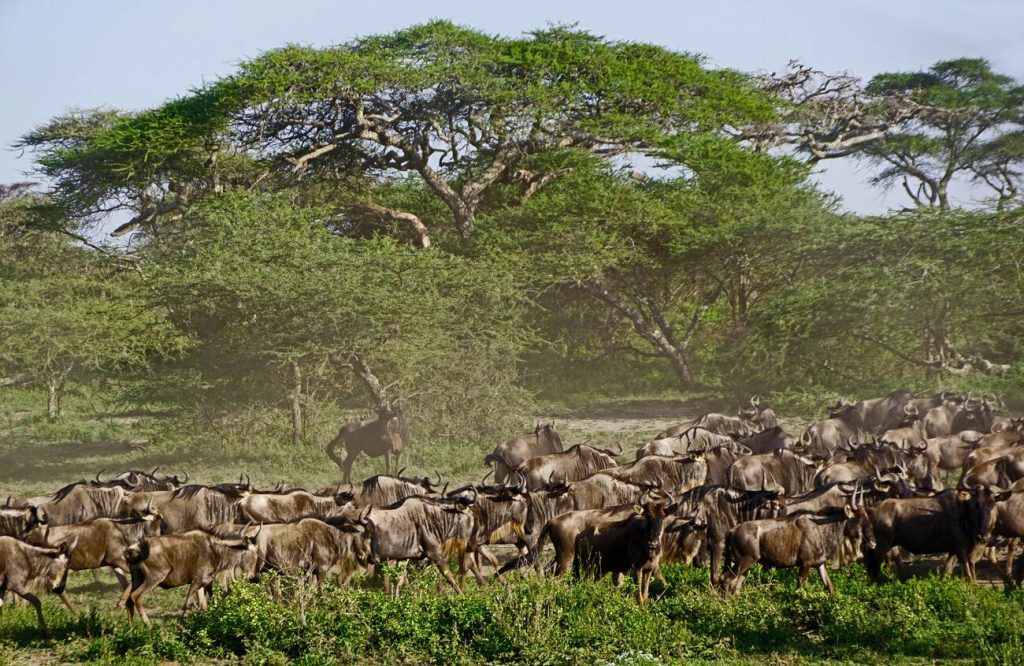In this article, we’ll explore the defining features of popular culture and delve into its impact on our lives. From its dynamic and ever-changing nature to its influence on various aspects of society, we’ll uncover how pop culture shapes our world. So, if you’re ready to dive into the exciting world of popular culture, let’s get started!
Definition and Scope
To understand the characteristics of pop culture, it is important to have a clear definition and scope of what it encompasses. Pop culture can be defined as the popular and mainstream aspects of a society’s beliefs, values, attitudes, and practices. It is the culture that is embraced and celebrated by a large portion of the population, often influenced by media and technology. Pop culture is constantly evolving and changing, reflecting the current trends and interests of society.
One of the defining boundaries of pop culture is its cultural significance. It shapes the way we think, behave, and interact with others. It has the power to influence our fashion choices, music preferences, and even our language. Pop culture has a significant impact on various aspects of our lives, from the way we consume media to the products we buy.
Another important aspect of pop culture is its regional variations. While certain elements of pop culture may be global, there are also unique variations that are specific to different regions and communities. These regional variations contribute to the diversity and richness of pop culture, allowing for different expressions and interpretations.
Pop culture and media go hand in hand. Media plays a crucial role in shaping and disseminating pop culture. From movies and television shows to social media platforms, media influences the trends and ideas that become popular. It has the power to amplify certain aspects of pop culture and spread them widely.
Global Influence
Moving from the previous subtopic of ‘Definition and Scope,’ we can now delve into the subtopic of ‘Global Influence’ within the article titled ‘What Are the Characteristics of Pop Culture.’ Global influence is a significant aspect of pop culture, as it extends beyond borders and reaches far and wide. One key element of global influence is cultural diversity. Pop culture incorporates various cultural elements from different parts of the world, celebrating the richness of traditions, customs, and lifestyles. However, it is important to address the issue of cultural appropriation, where elements of one culture are borrowed and misused by another culture.
Media representation plays a crucial role in shaping global influence. Through movies, television shows, music, and social media platforms, pop culture spreads its messages and ideas to a global audience. These representations can either reinforce stereotypes or challenge them, influencing perceptions and attitudes. Cultural exchange is another aspect of global influence in pop culture. It allows for the sharing of ideas, practices, and artistic expressions across different cultures, fostering understanding and appreciation.
Rapid Evolution
Pop culture undergoes constant and rapid evolution, shaping societal trends and influencing popular beliefs. Cultural shifts, changing norms, social media, generation gap, and cultural adaptation play significant roles in this rapid evolution. Let’s take a closer look at how these factors contribute to the ever-changing landscape of pop culture.
| Cultural Shifts | Changing Norms | Social Media |
|---|---|---|
| Society experiences cultural shifts as new ideas and values emerge. These shifts are reflected in pop culture through music, fashion, and entertainment. | Norms, or accepted behaviors, change over time. Pop culture both reflects and influences these changing norms. For example, societal attitudes toward gender roles have evolved, and pop culture has played a role in challenging and reshaping these norms. | Social media platforms like Instagram, TikTok, and Twitter have become powerful tools for spreading and shaping pop culture. They allow for the rapid dissemination of trends and ideas, amplifying their impact on society. |
| Generation Gap | Cultural Adaptation |
|---|---|
| The generation gap refers to the differences in values and preferences between different age groups. Pop culture reflects the interests and tastes of younger generations, leading to a constant evolution as new generations enter the scene. | Pop culture is constantly adapting to new influences and incorporating elements from different cultures. This cultural adaptation allows for the creation of new and unique forms of expression, ensuring that pop culture remains relevant and engaging. |
Artifacts and Icons
When exploring the subtopic of ‘Artifacts and Icons’ in the article ‘What Are the Characteristics of Pop Culture’, you will find that these elements play a significant role in defining and shaping popular culture. Artifacts and icons hold cultural significance, capturing the essence of a particular era or movement. They resonate with people and become symbols of their time, representing the values and beliefs of a society. These artifacts and icons gain popularity and recognition, becoming iconic in their own right. They hold a powerful symbolic representation, evoking emotions and memories associated with a specific time period or cultural phenomenon. Moreover, they have the ability to influence and inspire the masses, shaping trends and impacting various aspects of society, such as fashion, music, and entertainment. Finally, artifacts and icons often have a nostalgic appeal, reminding people of a simpler time or a cherished memory. They hold a special place in popular culture, connecting generations and serving as a constant reminder of the past.
Cultural Homogenization
To understand the impact of popular culture, you must consider the process of cultural homogenization. Cultural homogenization refers to the blending or assimilation of different cultures, resulting in a loss of cultural diversity and uniqueness. In today’s globalized world, popular culture has become a dominant force, leading to the spread of certain cultural norms, values, and practices across the globe.
Cultural assimilation, a key aspect of cultural homogenization, occurs when one culture absorbs or adopts elements from another culture. This can lead to a loss of cultural identity and a sense of belonging for some communities. Cultural preservation, on the other hand, aims to protect and maintain the unique aspects of a particular culture. However, it can be challenging to preserve cultural diversity in the face of cultural imperialism, where dominant cultures impose their values and beliefs on others.
Popular culture, with its widespread reach and influence, can both contribute to and hinder cultural preservation. On one hand, it can help promote and celebrate diverse cultures, fostering a sense of pride and appreciation. On the other hand, it can also lead to the erosion of traditional practices and values, as well as the loss of cultural diversity.
Impact on Society
As you delve into the impact of popular culture on society, it is important to consider its influence on cultural homogenization and the preservation of cultural diversity. Popular culture has a profound impact on behavior, societal norms, and social dynamics, largely due to its widespread media influence. Here are four key ways in which popular culture shapes society:
- Behavioral Influence: Popular culture has the power to shape our behavior by influencing our choices, preferences, and lifestyles. From fashion trends to music genres, popular culture sets the standards and expectations for what is considered “cool” or desirable.
- Cultural Integration: Through its widespread reach, popular culture promotes cultural integration. It brings people from diverse backgrounds together, exposing them to different traditions, languages, and perspectives. This integration fosters understanding and appreciation for other cultures, contributing to a more inclusive society.
- Media Influence: Popular culture is closely intertwined with media, and the media plays a significant role in shaping societal norms and values. Whether through television, movies, or social media platforms, the media perpetuates certain ideals and behaviors, ultimately influencing our perception of what is acceptable or desirable.
- Social Dynamics: Popular culture influences the dynamics of social interactions. It shapes our language, slang, and even the way we communicate with one another. It brings people together, creating shared experiences and common interests that contribute to the formation of communities and subcultures.
Role of Technology
With the rise of technology in recent decades, popular culture has become increasingly influenced by and intertwined with digital advancements. The digital revolution and technological advancements have had a profound impact on shaping popular culture as we know it today. The emergence of virtual communities and online platforms has revolutionized the way we interact, consume media, and express ourselves.
Through technology, people from all over the world can connect and engage in virtual communities centered around shared interests and passions. Online platforms have provided a space for individuals to express themselves, share their creativity, and contribute to the evolution of popular culture. Whether it’s through social media, video sharing platforms, or online gaming communities, technology has allowed for a democratization of culture, giving everyone a voice and platform to participate.
Technological advancements have also transformed the way we consume and access popular culture. Streaming services have made it easier than ever to consume music, movies, and television shows on-demand. E-books and digital publications have made literature more accessible and convenient. The impact of technology on popular culture is undeniable, as it has given rise to new art forms, genres, and trends.
Furthermore, technology has not only influenced the creation and consumption of popular culture but has also shaped the content itself. From the use of special effects in movies to the integration of virtual reality in gaming, technology has expanded the possibilities and immersive experiences available to audiences. It has opened up new avenues for storytelling, creativity, and artistic expression.
Relationship With Youth Culture
Youth culture plays a significant role in shaping and influencing popular culture today. Here are four key ways in which youth culture impacts popular culture:
- Youth identity: The values, beliefs, and behaviors of young people shape their own unique identity within popular culture. They often challenge societal norms and contribute to the development of new trends and styles.
- Counterculture movements: Throughout history, youth culture has been at the forefront of countercultural movements. From the hippie movement of the 1960s to the punk and grunge movements of the 70s and 90s, young people have used popular culture as a platform for social and political change.
- Cultural expression: Youth culture provides an outlet for creative expression. Through art, fashion, music, and other forms of cultural expression, young people showcase their individuality and contribute to the diversity of popular culture.
- Social media impact: In the digital age, social media platforms have become integral to youth culture. They provide a space for young people to connect, share ideas, and influence popular culture on a global scale. From viral challenges to online activism, social media has amplified the generational influence of youth culture.
The relationship between youth culture and popular culture is dynamic and constantly evolving. As young people continue to shape and redefine popular culture, their impact will be felt for generations to come.
Influence on Fashion and Trends
The influence of youth culture on fashion and trends can be seen in the ever-changing styles and preferences embraced by popular culture. From the red carpet to the streets, fashion is constantly evolving, driven by various factors such as celebrity influence, the fashion industry, social media trends, street style, and even cultural appropriation.
Table: Influence on Fashion and Trends
| Factors | Description |
|---|---|
| Celebrity influence | Celebrities have a significant impact on fashion trends. Their outfits on the red carpet or their street style choices are often replicated and emulated by their fans. Their endorsements of certain brands or collaborations with designers can also shape the industry and consumer preferences. |
| Fashion industry | The fashion industry plays a crucial role in setting trends. Designers, fashion houses, and influencers dictate what is fashionable through runway shows, editorials, and advertising campaigns. They introduce new styles, fabrics, and colors, setting the tone for each season. |
| Social media trends | Social media platforms like Instagram, TikTok, and Pinterest have become key influencers in the fashion world. Users showcase their personal style, inspire others with their outfits, and share shopping recommendations. The viral nature of social media trends can quickly propel a certain item or style into the mainstream. |
| Street style | Street style, characterized by the fashion choices of everyday people, has gained significant influence in recent years. Fashion photographers capture stylish individuals during fashion weeks and in major cities, showcasing their unique and authentic styles. Street style has become a source of inspiration for designers, brands, and consumers alike. |
| Cultural appropriation | Cultural appropriation is a controversial aspect of fashion and trends. It refers to the adoption of elements from a culture by another culture, often without proper understanding or respect. While cultural exchange and appreciation can be positive, it is important to approach it with sensitivity and avoid appropriating sacred symbols or stereotyping. |
Controversies and Criticisms
When discussing the influence of youth culture on fashion and trends, it is important to address the controversies and criticisms that arise within popular culture. Pop culture is not without its fair share of controversies and criticisms. Here are some of the key issues that often spark debate and discussion:
- Controversial themes: Popular culture often delves into controversial topics that can be polarizing and divisive. Whether it’s through music, movies, or television shows, controversial themes can spark intense debate and push societal boundaries.
- Cultural appropriation: One of the most significant criticisms of popular culture is the issue of cultural appropriation. This occurs when elements of a marginalized culture are adopted and commodified by the dominant culture without proper understanding or respect. It raises ethical questions about the exploitation and commodification of cultural traditions.
- Commercialization concerns: Popular culture is heavily influenced by commercial interests. Critics argue that this focus on profit can lead to the exploitation and commodification of art, music, and other forms of cultural expression. It raises concerns about the loss of authenticity and the prioritization of profit over artistic integrity.
- Stereotyping issues: Popular culture has been criticized for perpetuating stereotypes and reinforcing harmful societal norms. Whether it’s through the portrayal of certain racial or gender stereotypes, critics argue that popular culture can contribute to the marginalization and discrimination of certain groups.
It is important to engage in critical discussions about these controversies and criticisms to foster a more inclusive and mindful popular culture that respects and values diverse perspectives.






